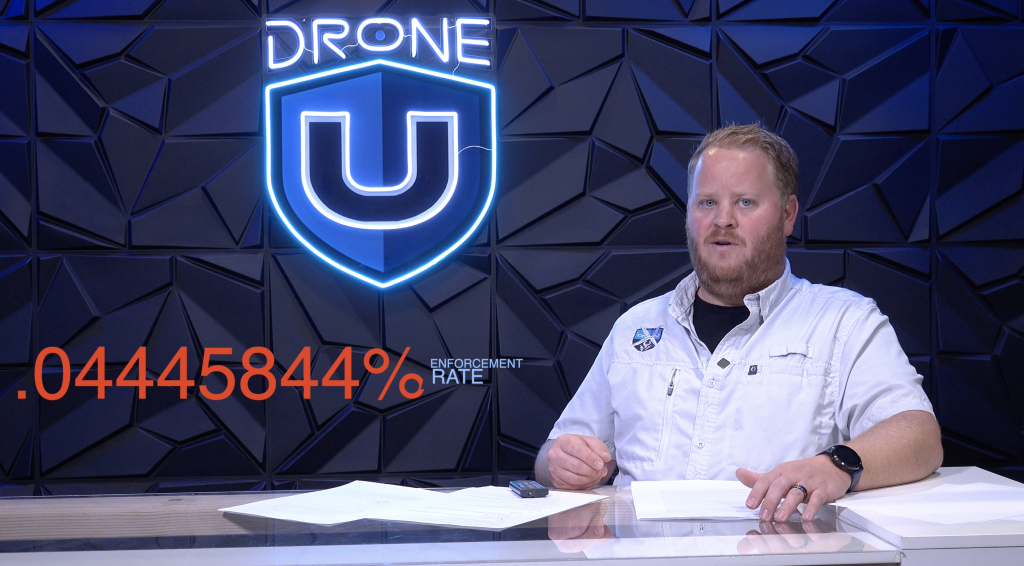
How often do drone pilots actually get in trouble with the Federal Aviation Administration (FAA)? Surprisingly, the answer points to a remarkably low enforcement rate for drone pilots.
According to a study by Embry-Riddle, the enforcement rate is just 0.004458444%. In the past decade, even the time prior to Part 107 up until last year, there were only 384 enforcements. While this figure might suggest a laissez-faire attitude by the FAA, the reality of drone regulation and enforcement is more nuanced.
The Perception of FAA Enforcement
There’s a prevailing notion that the FAA has been relatively inactive in pursuing enforcement actions against UAS operators. This perception could lead to a false sense of security among drone pilots. After all, with only 384 enforcement actions against almost 900,000 registered drones, the numbers appear to be in the pilots’ favor. However, this low enforcement rate doesn’t necessarily equate to blanket safety in the skies.
The Reality of Drone Compliance
Several years ago, it was a commonly held belief that many drone owners were not registering their drones. The FAA has personally told us that they still struggle to get people to register their drones. This theory was somewhat supported in 2018 when estimates suggested that there were over 8 million drones in the United States.
Fast forward to last year, when DJI, a leading drone manufacturer, reported sales of $30.6 billion. Considering that the USA represented ~60% of DJI’s total sales, and assuming an average drone price of $2000, it’s possible that over 15 million drones were sold in the USA alone.
The Risk of Non-Compliance
What these figures suggest is that drone flying is a widespread and popular activity. However, they also highlight the potential for non-compliance with FAA regulations. The study by Embry-Riddle noted that most common enforcement actions occur around Class B airspace or near large airports. This is a critical point for drone pilots to remember, as these areas are highly regulated for safety reasons.
One key takeaway from the study is that unless a drone crashes, the enforcement rate is virtually zero. This doesn’t mean that pilots should be complacent. It’s crucial to understand that even though the probability of enforcement seems low, the consequences of non-compliance can be significant, especially in the event of an accident.
The Importance of Being Certified and Compliant
Holding a Part 107 certificate, the FAA’s drone pilot certification, is more important than ever. Some pilots might think they don’t need this certification, but it’s essential to remember that in the event of a crash, insurance typically only pays out if the pilot is certified and following FAA guidelines. Additionally, flying in controlled airspace requires authorization, and failure to obtain this can lead to enforcement actions, particularly if an incident occurs.
The Bottom Line: Safety and Responsibility
The low enforcement rate is likely a testament to the overall safety and responsibility exercised by the majority of drone pilots. It’s essential to continue this trend by flying responsibly. This means not only adhering to FAA regulations but also being considerate of others’ privacy and safety – don’t fly below your neighbor’s treetops, for example.
In conclusion, while the likelihood of facing FAA enforcement may be low, the potential risks and consequences of non-compliance are not. Drone pilots should maintain a commitment to safety, responsibility, and adherence to regulations. The skies are vast, but they are also shared and regulated spaces. As drone technology and usage continue to grow, so does the importance of responsible piloting. So, keep flying, but do so with the knowledge and respect that this exciting technology demands.







Add Your Comment